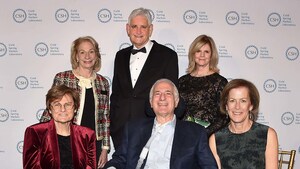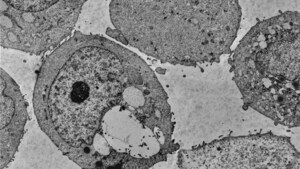The curious immune cells caught between worlds
COLD SPRING HARBOR, N.Y., Sept. 24, 2024 /PRNewswire/ -- Our immune system spans two worlds—innate and adaptive. Innate immune cells are like troops at the gate ready to hold off invaders and raise the body's alarms. Adaptive immune cells are specialists that take longer to respond but can fight off foes in a more targeted manner. Curiously, there are also immune cells that exist between worlds. Important among these cellular combatants are innate-like T cells. Their hybrid-like nature makes them promising candidates for developing new kinds of immunotherapies against diseases such as cancer.
The problem is that scientists still don't know much about how this unique type of T cell functions and develops in humans. Cold Spring Harbor Laboratory (CSHL) Assistant Professor Hannah Meyer and her collaborator at the University of Colorado Anschutz, Professor Laurent Gapin, set out to determine just that.
"Studying the development of the immune system is as important as investigating its role in disease," says Salomé Carcy, a former graduate student in the Meyer lab who co-led this study. "We need to understand immune cells' origin to gain insights into their functional potential in pathological contexts. One of the key motivations of our work was to investigate how much our knowledge built on mouse models applies to human physiology."
The team discovered that innate-like T cells mature differently in humans than in mice, and that age plays a critical role here. They found that early in life, most innate-like T cells in the human thymus aren't able to use all of their immune abilities. It's as if they have one hand tied behind their back. In adults' bloodstreams, however, it's a different story. There, innate-like T cells are on standby, ready to fight as soon as they receive their 'go' signal. This pattern is observed in both mice and humans.
According to Meyer, these distinctions should make for key considerations when it comes to developing and testing immunotherapeutics, especially since much preclinical trial research is conducted in mouse models. She says:
"We need to take these differences into account. We'd be interested to look at these differences to see how they change over time and if these cells are more powerful at different ages. And is this something we can therapeutically exploit?"
For now, Meyer and her team continue to dissect the complicated lives of immune system agents such as innate-like T cells. Their work may one day allow researchers to harness the power of both the innate and adaptive immune systems into a new, more formidable kind of immunotherapy.
About Cold Spring Harbor Laboratory
Founded in 1890, Cold Spring Harbor Laboratory has shaped contemporary biomedical research and education with programs in cancer, neuroscience, plant biology and quantitative biology. Home to eight Nobel Prize winners, the private, not-for-profit Laboratory employs 1,000 people including 600 scientists, students and technicians. For more information, visit www.cshl.edu
SOURCE Cold Spring Harbor Laboratory

WANT YOUR COMPANY'S NEWS FEATURED ON PRNEWSWIRE.COM?
Newsrooms &
Influencers
Digital Media
Outlets
Journalists
Opted In






Share this article